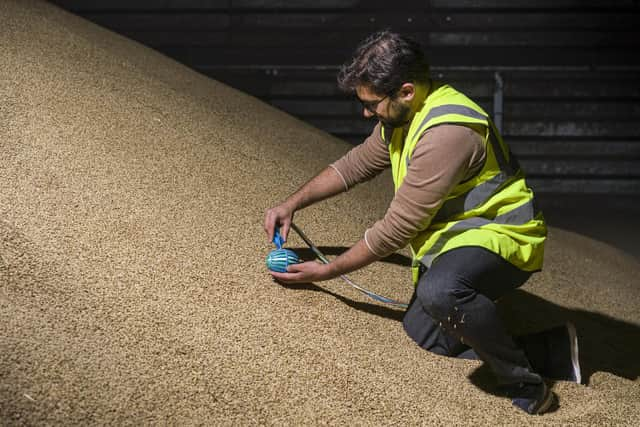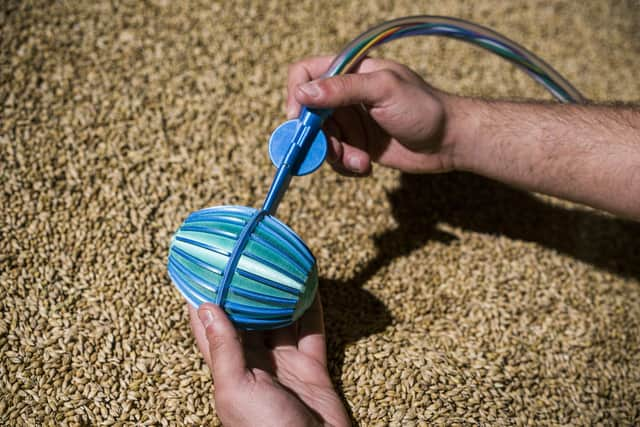Grain-surfing robot launched by Scottish start-up set to revolutionise crop management
The T-shaped robot is a product of agritech developer Crover, a new tenant of the National Robotarium – a centre for robotics and artificial intelligence based in the Scottish capital.
The compact device, which is being funded by Innovate UK, Scottish Enterprise and private funders, has been designed to offer grain aggregators, including farmers, a better insight into the environmental conditions of grain crops, such as wheat and barley, when stored in sheds or silos.
Advertisement
Hide AdAdvertisement
Hide AdThe aim is to make the more traditional processes for store checks, which rely on manual sampling, and can be often time consuming, labour intensive and potentially hazardous, easier.


Crover’s robot has in-built moisture and temperature sensors and uses two domed-shaped wheels to propel itself through grain or other material in a bulk stack. It then feeds back analysis and data to a dashboard, giving users a more accurate understanding of the grain's condition.
Temperature and humidity have a profound impact on grain storage and can contribute to the infestation of mould or insects, which cause farmers to destroy significant portions of their stored crops. It is estimated up to 30 per cent of commodity grain is lost from the supply chain globally every year as a result.
Lorenzo Conti, founder of Crover, said: “This kind of insight can help people like farmers to better understand the condition of their grain and make informed decisions earlier like increasing ventilation or taking pest control measures.”
The National Robotarium, supported by £21 million from the UK Government and £1.4m from the Scottish Government, officially opened its doors in September last year.


Scotland’s wellbeing economy secretary Neil Gray said: “Technological advances like this show why the Scottish Government has supported the Robotarium through the Edinburgh and South East Scotland City Region Deal.” The robot was also praised by UK Government Minister for Scotland, Malcolm Offord.
"It's fantastic to see that farming and food and drink-boosting innovations like Crover's new 'grain-surfing' robot will benefit from being part of the National Robotarium,” he said.
Comments
Want to join the conversation? Please or to comment on this article.